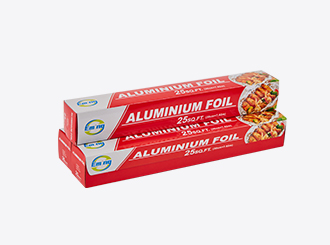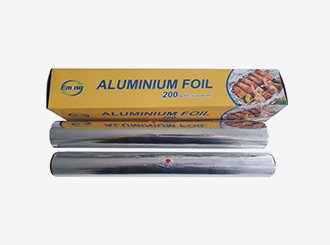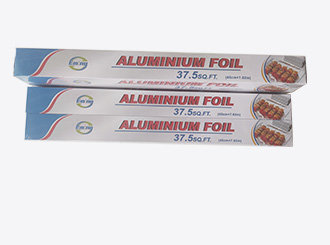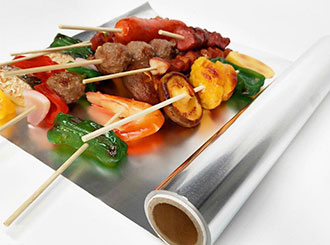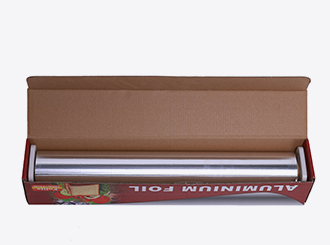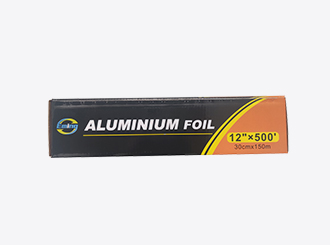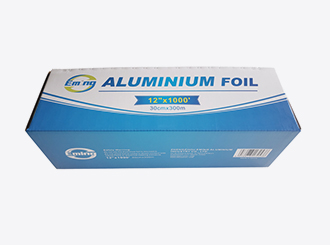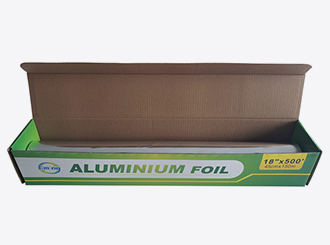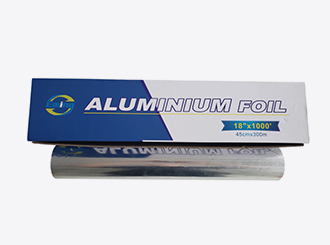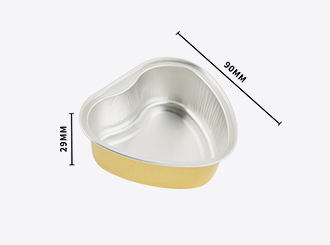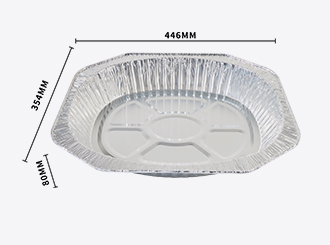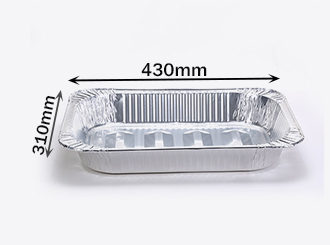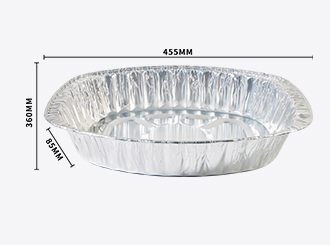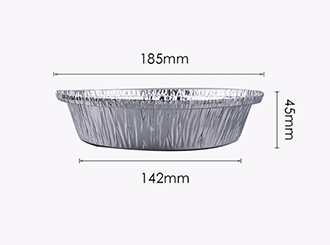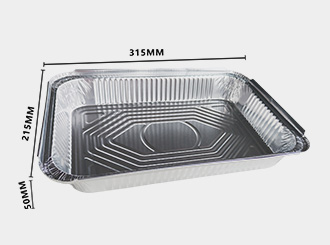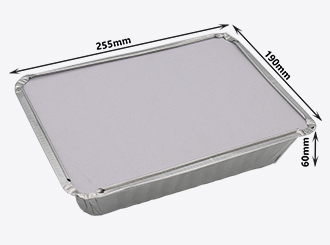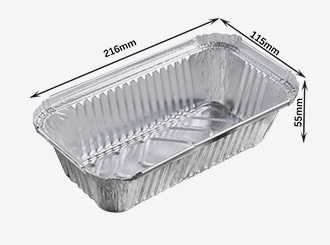As a household
aluminium foil roll manufacturer, Zhengzhou Eming Aluminium Industry, often receive inquiries from aluminum foil importers and distributors asking: What are the most common aluminium foil sizes? and What determines the price of aluminum foil rolls? Whether you're a seasoned distributor or just entering the aluminum foil business, having a clear understanding of standard sizes and price-determining factors will empower you to make informed purchasing decisions and communicate more effectively with your customers.
In this article, we will cover:
- Common household aluminum foil roll sizes
- Key specifications that affect aluminum foil pricing
- The role of packaging components such as paper cores and cartons
- How to optimize your order for best cost-efficiency
Common Household Aluminum Foil Roll Sizes
Aluminum foil is a daily essential in many kitchens around the world. Whether used for food wrapping, cooking, baking, grilling, or storage, aluminum foil is a staple product in supermarkets, convenience stores, and commercial supply chains.
The most common sizes for household aluminum foil rolls are standardized for consumer use. Here are the popular options:
| Size |
Rolls/Box |
Carton Size |
Cube |
| 300mm x 60m |
24 |
37.5*25*34cm |
0.032m³ |
| 300mm x 100m |
12 |
36*30*22.5cm |
0.024m³ |
| 300mm x 120m |
6 |
36*23*15.5cm |
0.013m³ |
| 300mm x 150m |
6 |
36*23.6*16cm |
0.014m³ |
| 300mm x 200m |
4 |
37*19.5*20cm |
0.014m³ |
| 300mm x 300m |
4 |
37*21.5*22cm |
0.018m³ |
| 450mm x 60m |
24 |
37.5*25*49cm |
0.046m³ |
| 450mm x 100m |
12 |
51*30*22.5cm |
0.034m³ |
| 450mm x 120m |
6 |
51*23*15.5cm |
0.018m³ |
| 450mm x 150m |
6 |
51*23.5*16cm |
0.019m³ |
| 450mm x 200m |
4 |
51*19.5*19.5cm |
0.019m³ |
| 450mm x 300m |
4 |
51*21.5*21.5cm |
0.024m³ |
Standard Widths:
- 12 inches (30 cm): Most widely used size for household rolls, fits standard baking trays.
- 18 inches (45 cm): More common in commercial kitchens or barbecue settings.
Standard Lengths:
- 5 meters (~16.4 feet)
- 10 meters (~32.8 feet)
- 20 meters (~65.6 feet)
- 25 meters (~82 feet)
- 30 meters (~98.4 feet)
- 50 meters (~164 feet)
- 100 meters (~328 feet)
- 150 meters (~492 feet)
- 200 meters (~656 feet)
- 500 feet (~152.4 meters) – Preferred in North America
- 1000 feet (~304.8 meters) – Commercial and bulk-use
Thickness:
- 9 microns – Entry-level thickness, cost-effective
- 10-11 microns – More durable than 9 mic
- 12 microns – Most common for general household use
- 14-18 microns – Heavy-duty applications
- 20+ microns – For catering, roasting, or industrial-grade foil
Aluminum foil distributors typically choose the size based on the demands of their regional markets, retail segment (supermarket vs. professional use), and whether they are supplying under a brand or private label.
Factors That Affect Aluminum Foil Roll Prices
Aluminum foil roll pricing is not simply about dimensions. Several underlying variables can influence cost significantly. Understanding these parameters helps distributors balance quality, function, and budget.
A. Length, Width, and Thickness
These three dimensions directly determine how much raw aluminum is used.
- Longer lengths mean more material, but unit prices can drop due to bulk economies.
- Wider rolls use more width per meter, increasing the material cost proportionally.
- Greater thickness enhances durability but also raises cost due to higher aluminum content.
Example: A 12 micron, 30cm x 10m roll will be cheaper than a 14 micron, 45cm x 10m roll simply due to material usage.
B. Net Weight
This is the actual weight of the aluminum foil without the paper core or packaging. Net weight directly correlates to raw material consumption.
- Aluminum foil distributors who focus on cost per ton will calculate product value based on net aluminum content.
- However, retailers often price by roll or box, making visual size and length more important than actual weight.
C. Gross Weight
Gross weight includes the foil, paper core, box, and carton. It affects:
- Shipping costs – Especially important for international sea or air freight
- Warehouse storage – More relevant for bulk buyers and wholesalers
- Retail packaging weight claims – May be regulated in some markets
D. Paper Core Material and Weight
Though often overlooked, the paper core inside each roll affects price, packaging quality, and transport.
Types of Paper Cores:
- Type A (Premium): Thick, strong, and smooth. Ideal for branded or premium market.
- Type B (Standard): Moderate quality, cost-effective for most uses.
- Type C (Economy): Lightweight, lower cost but may deform under heavy foil.
Paper Core Weight:
- Commonly ranges between 80g to 150g per core.
- Heavier cores are more durable, especially for longer rolls like 100m+.
- Lighter cores save cost but can compromise strength in transit or storage.
E. Box and Carton Specifications
While not a direct part of the foil, packaging adds to the total product cost:
- Box type (color box, white box, shrink wrap, dispenser box)
- Printing quality (offset printing, lamination, foil stamping)
- Carton strength (single wall, double wall, 3-ply, 5-ply)
- Quantity per carton (e.g., 24 rolls, 48 rolls, 6 rolls for large catering size)
Custom printing and durable packaging increase brand appeal but also add cost.
Understanding Price Quotes: Key Points for Distributors
When you request a quotation from an aluminum foil manufacturer, make sure to clarify the following:
- Is the price based on net weight, gross weight, or per roll?
- Are paper cores included in the weight or billed separately?
- What's the aluminum price base used? (Usually linked to LME)
- Any custom packaging included or extra?
- What's the MOQ (Minimum Order Quantity)?
- What is the delivery term (FOB, CIF, EXW)?
Always compare "apples to apples". Two rolls may look identical but vary in net foil weight, thickness, or paper core—leading to very different costs.
Cost Optimization Tips for Distributors
To stay competitive while maintaining product quality, consider the following strategies:
A. Choose Thickness Wisely
Instead of always going for the cheapest 9 micron foil, consider offering:
- 12 micron foil for retail
- 14-18 micron for barbecue and food service sectors
- Use laminated color boxes or branded packaging to differentiate
B. Customize Core Type Based on Roll Size
- Use lighter cores (Type C) for 5m–10m rolls
- Use stronger cores (Type A/B) for 100m and above
- Optimize core weight without compromising structure
C. Negotiate Packaging Efficiency
Work with your supplier to:
- Optimize carton sizes to reduce dead space
- Use cost-effective box designs (e.g., shrink-wrapped rolls)
- Standardize carton quantities to match pallets for easy logistics
D. Balance Length and Pricing for Retail Success
Shorter rolls (5m, 10m) allow for higher margin per roll and attract budget buyers.
Longer rolls (30m, 50m, 100m) provide value-for-money, good for family packs or wholesalers.
Offering a range of sizes gives you better positioning in diverse retail channels.
Understanding the key specifications and price factors of household aluminum foil rolls is essential for every distributor. From dimensions and material thickness to paper core types and packaging, each element plays a role in determining the final cost and market positioning of the product.
As one of the
aluminium foil suppliers in China, Eming is committed to helping our partners make informed decisions by offering customizable solutions to meet different market demands—whether you're supplying supermarkets, wholesalers, or foodservice operators.
If you need tailored recommendations or are planning a private label project, we're here to assist. Let's build a strong, transparent, and profitable partnership in the aluminum foil business.
